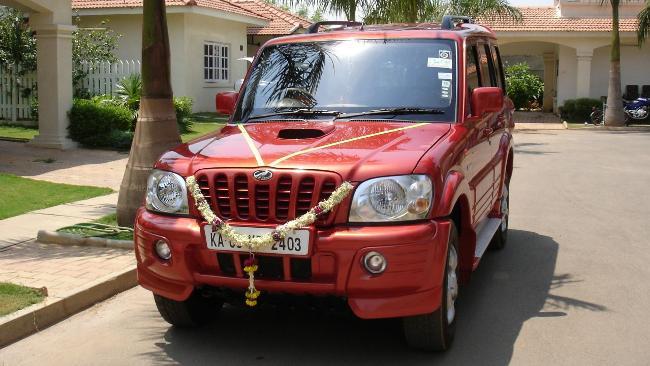Takeover vehicles
INDIA'S Anand Mahindra wants his brand to be as familiar as Toyota or Hyundai.

WHEN Bendigo pilots Ken Evers and Tim Pryse touched down in their hometown in July after the first circumnavigation of the globe in an Australian-made aircraft, the word "Mahindra" was prominent on the nose and tail of their single-engined GA8-TC Airvan.
It’s a name few Australians are familiar with (outside of a small community of tractor and utility owners). But India’s 2010 entrepreneur of the year, Anand Mahindra, hopes to change that. And if his plans work out, there’s a good chance it will become the best known Indian name in the country.
Read more stories from the deal magazine
For the two pilots, the epic 29,000 nautical-mile flight was a fundraiser in the global fight against malaria. But for sponsor Mahindra (the new owner of Gippsland Aeronautics, maker of the Airvan), it was also a brand-building exercise.
While the 55-year-old Anand has yet to visit Australia – a “glaring gap” he hopes to rectify later this year – he terms
it a high priority market for his Mahindra group, which has an annual turnover of $8 billion. The Mumbai-based business tycoon, marathon runner, film maker, soccer fan, Harvard graduate, avid Twitter user and all-round transportation buff wants his tractors, utilities, SUVs and eventually his aircraft to be a big part of the Australian landscape. He’s watched Asian names such as Toyota and Hyundai become global brands and believes Mahindra can emulate their success.
Already, his tractor brand is the biggest seller in the world, with sales of a record 176,000 units in the financial year that ended March 31. He has more than 40 per cent of the Indian tractor market and a big presence in the US and China. In 2005, Mahindra established a foothold in Australia, setting up a 600-unit tractor assembly plant in Brisbane.
“We are selling 400 tractors a year in Australia,” he told the deal recently in Mumbai. “It’s a small number [the total Australian tractor market last year was 11,500 units], but we are getting a good reaction. We will be staying around.”
While the brand is relatively new, Mahindra has price on his side; a new 4WD Mahindra tractor in the 80-horsepower range goes for less than $40,000, considerably cheaper than a similar-sized John Deere or Kubota. And his tractors hold two global awards – a Japan Quality Award and a Deming prize.
Along with tractors, rugged utilities have been part of the Mahindra DNA since Anand’s grandfather and great uncle, J.C. and K.C. Mahindra, set up the family business in 1945. By 1947 the company was assembling Willys Jeeps in India and began full-scale Jeep manufacture in 1954. Other tie-ups followed with International Harvester, Peugeot and Mitsubishi Motors. The founding Mahindras were joined later by their sons Harish (Anand’s late father) and Keshub (Anand’s uncle, who remains chairman today). Anand is vice-chairman and has been managing director since 1997. The family has about 15 per cent of the listed flagship, Mahindra & Mahindra.
Fast-forward to 2002, when Anand unveiled the group’s first home-grown SUV, the Scorpio. Naturally, it’s his car of choice for tackling Mumbai’s rough-and-tumble streets. On the export front, the Scorpio has been a hit in Latin America and has done moderately well in Europe, where it is known as the Goa. The later versions have an Australian connection – a six-speed automatic transmission released in September 2008 was designed by Albury-based Drivetrain International Systems (which subsequently hit financial trouble and was bought by Chinese automaker Geely in 2009).
The four-door utility version, known as the Scorpio Getaway in India, is sold as the Mahindra Pik-Up in overseas markets, including Australia. While it has yet to find much favour here, it is viewed as durable, efficient and economical. It sells for about $10,000 less than the top brands such as the Toyota HiLux and Nissan Navarra, pitting it against the Chinese newcomer Great Wall in the “cheap ute” category.
When told that Australian farmers find the Pik-Up rugged but ugly, Mahindra strikes a philosophical note. “Styling varies between markets. We haven’t encountered the ugly tag in South Africa or Chile, where it’s doing extremely well. But styling is not one of the Pik-Up’s core attributes, that’s for sure. If people see its core attributes as durability and fuel efficiency, that’s great. That’s the Mahindra brand.”
There have been some missteps. Twenty years ago, a West Australian auto distributor began importing two small Mahindra 4WD models and marketed them as the Bushranger and the Stockman. They sold poorly, and the business lasted only three years. This time, Mahindra is here to stay. To give some muscle to its tie-up with the Sydney-based Tynan Motors group, Mahindra has 80 per cent of the joint venture known as Mahindra Automotive Australia.
To keep abreast of the “green fuel” push, Mahindra recently bought India’s Reva electric car company and hopes
to incorporate its battery technology in Mahindra’s light trucks. He says eco-friendly transport is becoming the “need of the hour” as the climate change debate intensifies. The Reva deal will help Mahindra expand its green footprint.
But his biggest play is still some years away – to become “the Embraer of India”, a reference to the Brazilian maker
of regional passenger jets. As a starting point, in December of last year Mahindra bought controlling stakes in two Australian aviation companies: the Morwell-based Gippsland Aeronautics; and the Melbourne-based Aerostaff Australia, a component manufacturer with a client list that includes Boeing, General Dynamics and Airbus.
Along with the eight-seater Airvan, Gippsland Aeronautics has the rights to revive the Nomad twin-engine passenger plane. A successful remake, with improved cockpit, engines and propellers, would be one of Mahindra’s building blocks on the way to creating a range of small turbo-prop passenger aircraft and, ultimately, a jetliner.
Mahindra said recently he would invest about $37 million in Aerostaff and $25 million in Gippsland Aeronautics over the next few years.
Another one of his Australian connections is through the IT services company Mahindra Satyam. Mahindra bought the Satyam business in April 2009 after founder Ramalinga Raju admitted to extensive corporate fraud. Satyam’s 2008 deal to establish a tech centre with Deakin University was scrapped, but after a year of ownership Mahindra says he is confident about future prospects. “I would hope to win new business in Australia. It’s a high priority market for us, and we have 300 to 400 people working there. At Mahindra, we don’t make promises we can’t keep.”
With his movie-star looks, his love of film making and photography, his support for his wife Anuradha’s magazine publishing and a broad range of interests outside the office, Mahindra is regarded as a Renaissance man. His corporate awards include 2010 Entrepreneur of the Year from Ernst & Young and 2007 Businessman of the Year from Business India magazine, whose publisher Ashok Advani has been charting Mahindra’s progress for the past 20 years. “Anand Mahindra proves that nice guys can finish first,” Advani says.
Geoff Hiscock writes on Indian business and is the author of India’s Global Wealth Club and India’s Store Wars, both published by John Wiley & Sons.


